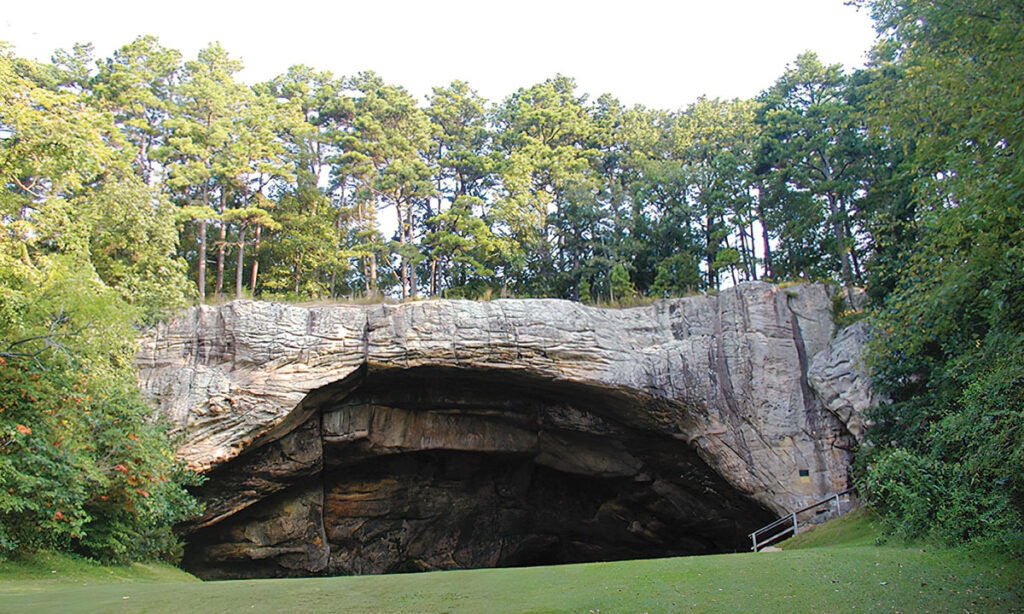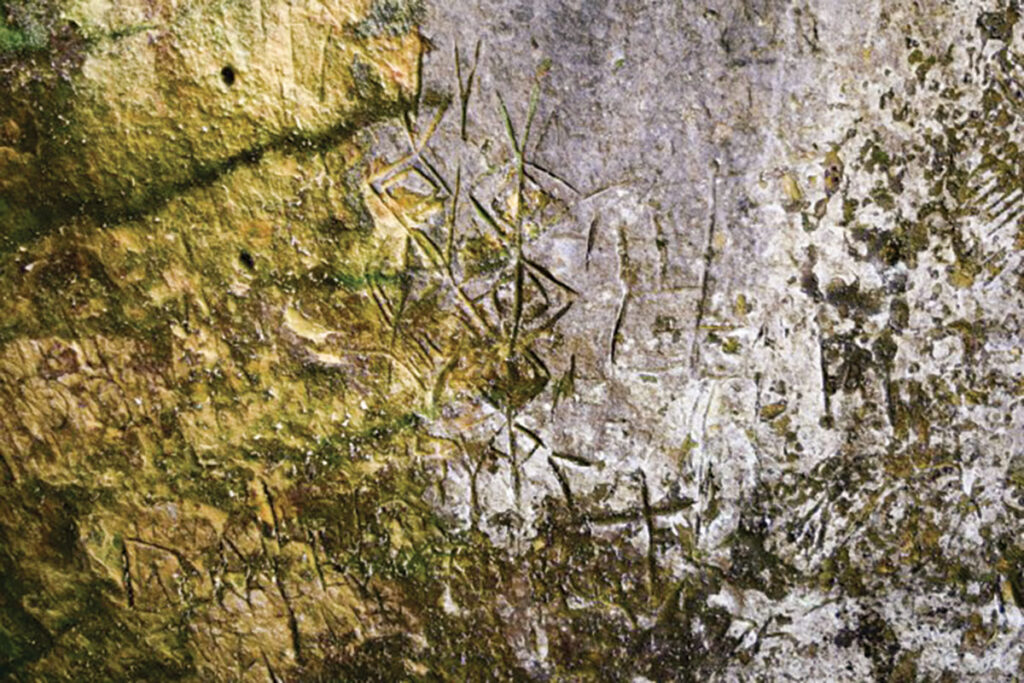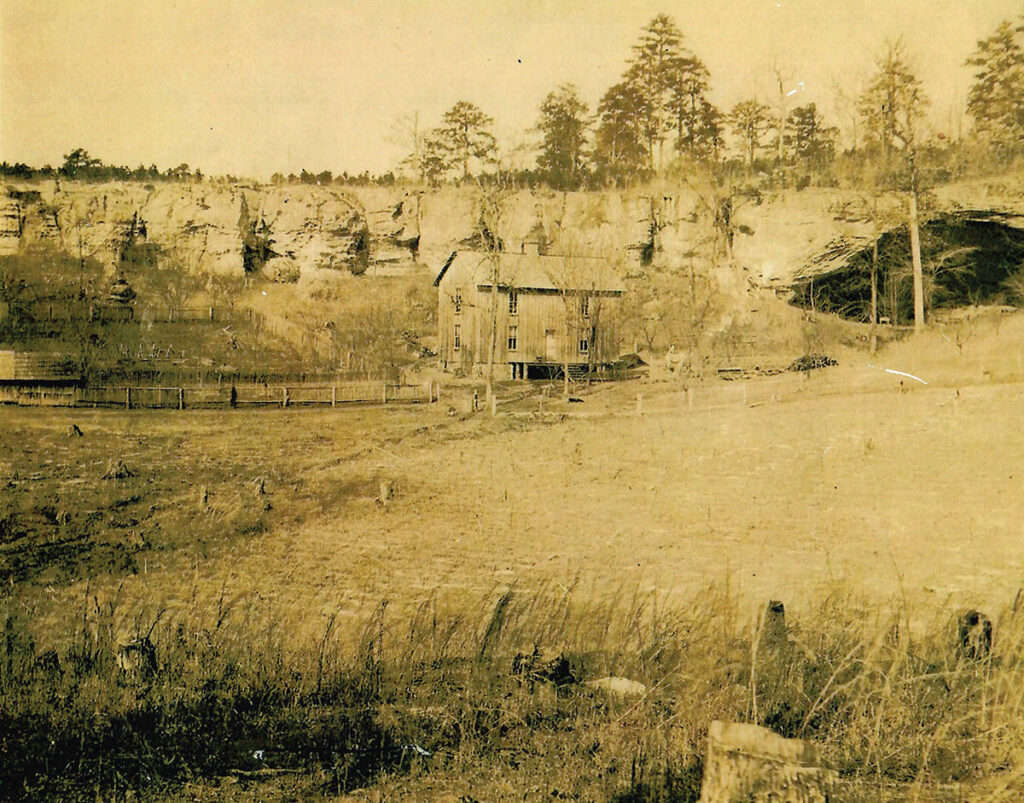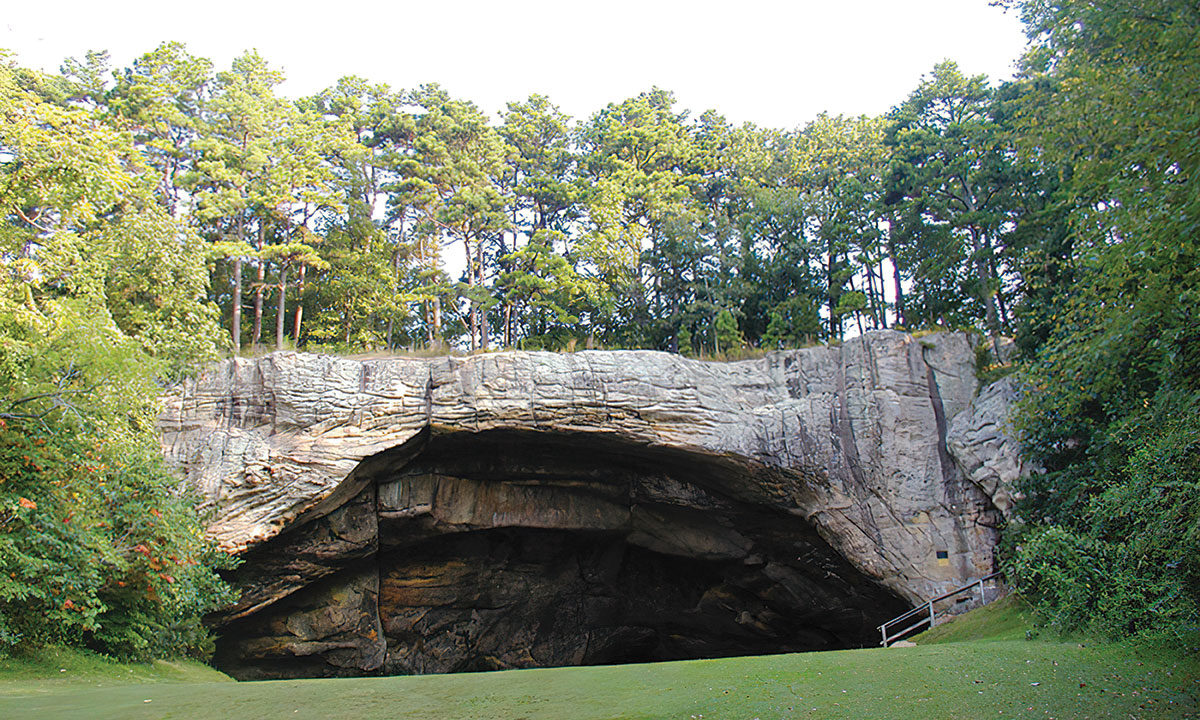
Arkansas cave holds a glimpse of early mankind
FAIRFIELD BAY, ARK. – In Fairfield Bay, Ark., history is found in an unlikely place — the Indian Hills Golf Resort.
Located at the resort are four caves, and one of those caves, the Indian Rock Cave, is the largest cave in Arkansas with petroglyphs (rock carvings).
Marilyn Robertson, curator and local historian, said it’s unclear how long the Indian Rock Cave was in use before homesteaders came to the area or exactly how old the petroglyphs are. It is one of two caves on site with the carvings.
“They have to be millions of years old,” Marilyn said. “The water is constantly changing and evolving the cave. When you talk about shale, it’s layers of different kinds of minerals and rocks. When it rains, it goes all through there, and the cave is dripping and changing. It is, however, absolutely humongous.”
Indian Rock Cave is nearly 100-feet wide, 100-feet deep and 50-feet tall.
Marilyn has been researching the region’s history for more than 30 years, writing 15 books on history in Van Burren, Cleburne and Stone counties, but neither she nor the archaeologists know what the petroglyphs mean.
“An archaeologist told me it’s like drawing a happy face with no documentation, and in 2,000 years, someone wanted to know what you meant,” she said. “If you look at the drawings, some have a lance with feathers coming out and there’s a horse, but the marks had to mean something, and that’s the part that gets confusing; we don’t know what they meant when they marked it.”

Early tribes in the area were the Osage, Caddo, Quapaw, Choctaw and Cherokee. Marilyn said the cave could possibly be from the Mississippian period, the period when shallow seas covered much of North America more than 300 million years ago, or the Paleoindian Period, which is about 12,000 years ago at the end of the last ice age when humans first appeared in the archaeological record in North America. It wasn’t until the 20th century that explorations began into the history of the cave.
“Archaeologists came down and did a dig in 1931,” Marilyn said. “The early pioneers were here way before the archaeologists came around. It’s believed the cave served as a tribal meeting place, perhaps as far back as 1000 B.C. In the late 1950s, that’s when they took 10 feet of dirt out of the bottom of the cave to make the ceiling higher because the kids wouldn’t stop drawing around the petroglyphs.”
As the cave was excavated, the soil removed was carefully examined for artifacts. Some of the items discovered are part of the on-site museum, as well as other items.
“I have a peace pipe from 1600 A.D. that comes from the Chippewa tribe in northern Minnesota and was unearthed here in 1931,” Marilyn said. “I also have a 4,000-year-old metate stone, which is a grinding stone that came out of a hole when they were putting the golf course in. It predates all of our local tribes. We have prehistoric people who were over 7 feet tall who predate our Indian tribes that roamed this part of the Ozark Mountains.”
The museum also houses many other artifacts and information about the region and beyond.
“I also have artifacts that go back to 950 AD and was unearthed in Crowley’s Ridge, Ark., and that goes back to the Mississippian period,” Marilyn said.
In addition to artifacts from the Indian Rock Cave, visitors can find historical items from the pioneer era, photos of the petroglyphs taken in 1931, and a detailed history of the building of the Greers Ferry Dam.

“When (President John F.) Kennedy dedicated the dam, it was the last thing he did as president before he went to Dallas,” Marilyn said.
The Indian Rock Cave is a highly sought backdrop for many activities. According to Marilyn, the Arkansas Symphony holds its annual Easter Sunrise Service at the cave, and members have stated that the acoustics are the “best they ever played in.”
“Mrs. Bradbury (an early homesteader to the area) taught in the cave back in 1902 and said it just echoed,” Marilyn said of historical accounts of the cave being used as a makeshift school for the children of homesteaders in the region. “She couldn’t wait until they actually built a school.”
A Cherokee Choir concert will be held on Oct. 14, and Native American pow wows and other events are held there.
Two nearby caves were used as the backdrop for a 12-part documentary highlighting the Natchez Trace. The Wilderness Road was released on Amazon in November.
An 1850 log cabin on the property is also the backdrop for movie producers are hoping to be picked up by a major streaming service.
About 13,000 visitors come to the museum, cabin and caves annually. Marilyn said so far in 2022, guests have come from as far as Czechoslovakia, Norway, Ireland and Kenya. Marilyn offers a guided tour from her golf cart for those who might have physical limitations that prevent them from walking the trails to the caves.
“Some people just can’t make it, so I take them down and give them a history lesson on the way, then bring them back,” she said, adding that tours history lessons are very popular with local teachers.
The museum is open daily, except in January and February. Marilyn said if it’s a warm March, normal operations might begin early, but it is typically mid-March before they are in full swing for the season. Marilyn is at the museum during the winter months, and will give tours if contacted.
“Everyone knows just to call me, and we will accommodate them,” she said.
The caves can be explored year round by visitors who care to venture along the paths.
Indian Rock Cave is a part of the National Register of Historic Places, but there may come a time when the petroglyphs are lost forever.
“The lichen and moss has covered a couple of them; they just don’t pop out anymore,” Marilyn said.







